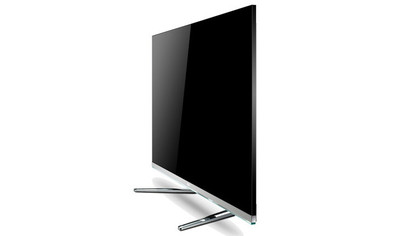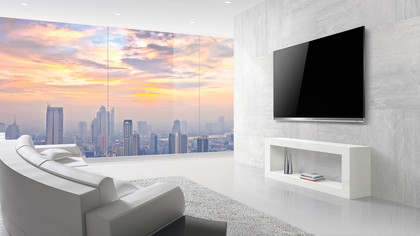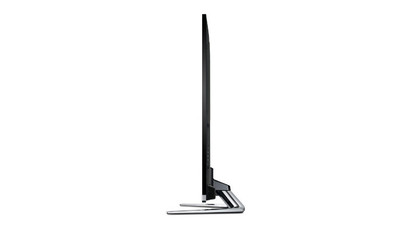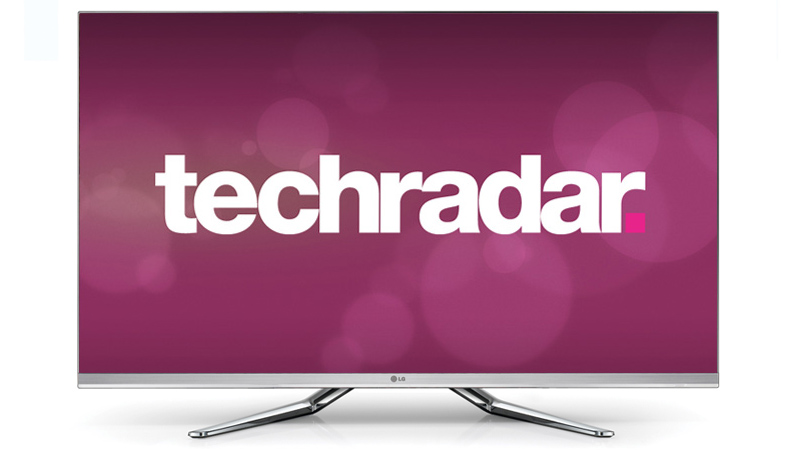Why you can trust TechRadar
For much of the time the LG 47LM860V's pictures are excellent. Outstanding, even. But they do also come a little undone at some fairly key moments.
The good news kicks off with the intensity of the TV set's colours. This has long been an LG strength, but the LG 47LM860V manages to combine gloriously aggressive saturation levels with a level of blend subtlety, range of tone and, crucially, naturalism, that's eluded past LG generations. So accurate are colours, in fact, that they add an extra layer of detail and depth to HD images.
Not surprisingly, the sort of ultra-rich colours just described owe a major debt of gratitude to two further impressive picture areas. First, the level of brightness the LG 47LM860V can produce is almost scary, despite it still retaining an A Class rating for energy efficiency.
But also looking impressive, at least initially, is the set's black level response, which provides a great foundation for colours to work against. The screen's ability to produce a credible black colour also means that dark colours retain their naturalism more successfully than is common with LCD TVs.

The LG 47LM860V does a great job, too, of pulling out every last bit of detail from good quality HD sources, at least in 2D mode. In fact, the quality of colour processing noted earlier, together with the screen's innate sharpness, ensures that the LG 47LM860V delivers a level of subtlety and clarity that really separates the premium TV men from the budget and mainstream boys.
It's important to stress, too, that the LG 47LM860V's clarity remains largely unspoiled when images contain a lot of motion. Most of LG's other TVs this year - including the otherwise good LM660T models - suffer with a degree of motion blur and/or some slightly uncomfortable motion artefacts caused by LG's motion processing system.
But these issues generally disappear on the LG 47LM860V - particularly if you stick with either the motion processing's relatively gentle Clear mode or set up your own 'User' setting with the judder and blur elements set below their halfway points.
Shifting our gaze to standard definition, it's good to see LG really getting to grips with the sort of upscaling processing you need to convert standard definition images to the screen's Full HD resolution.

Certainly the screen is able to add a sense of denseness and detail to standard definition images without exaggerating noise - and you can't really ask for much more than that.
The LG 47LM860V is also on great form with 3D. The non-shuttering nature of the passive glasses helps you enjoy 3D images that are brighter, more richly coloured and more stable than those enjoyed from the vast majority of active 3D TV sets. It's also great to find 3D images suffering only very rarely with crosstalk ghosting noise, which is another key passive 3D benefit.
Plus, of course, many families will be very happy indeed that the passive approach enables LG to include enough pairs of glasses to have four or five people joining in the 3D fun immediately, with no need to invest extra cash in adding to the one, two, or zero pairs of active glasses you tend to get with most active 3D TVs.
The negative sides to LG's passive technology, though, are also apparent on the LG 47LM860V. For starters, while crosstalk is mostly hard to see, if you try to watch 3D on this TV set from an angle of more than around 13 degrees above or below the screen, crosstalk levels suddenly explode to seriously unpleasant levels.

Also, passive 3D pictures look noticeably less crisp and detailed than good active ones, especially thanks to the appearance of horizontal striping and jaggedness over contoured edges or small, bright picture elements.
Overall, though, the LG 47LM860V delivers a superbly watchable, vibrant, deep and believable 3D experience that only the most die-hard HD enthusiasts could feel hostility towards.
There is one further problem with the LG 47LM860V we need to discuss, though. That's a few weaknesses when showing dark footage. This might sound odd, given our previous praise for the set's black level depths. But the problem is that this black level depth comes at a price.
The thing is, the only way to get the deepest blacks out of LG's screen is to use the TV's local dimming system. Yet this causes distracting squares and rectangles of light around any bright objects if they appear against dark backgrounds.

You can reduce the impact of these light 'chunks' by reducing the TV's backlight level, but this approach doesn't wholly resolve the distracting problem. And it reduces the brightness and shadow detailing of your pictures.
So how about turning the local dimming off? Well, this certainly solves the light blocking problem, but unfortunately it also results in a major reduction in the image's black level response, leaving dark scenes looking rather greyed over.
Last year we might have felt more sanguine about the light blocking issues on the LG 47LM860V, but Sony's HX853 models have now shifted the goalposts of what's considered possible from local dimming edge LED technology.
Don't get us wrong; for the majority of the time the LG 47LM860V's pictures can be made to look really quite lovely - especially if you're in the mood for 3D. But there are just enough problems when the going gets dark to potentially upset movie fans.
John has been writing about home entertainment technology for more than two decades - an especially impressive feat considering he still claims to only be 35 years old (yeah, right). In that time he’s reviewed hundreds if not thousands of TVs, projectors and speakers, and spent frankly far too long sitting by himself in a dark room.

